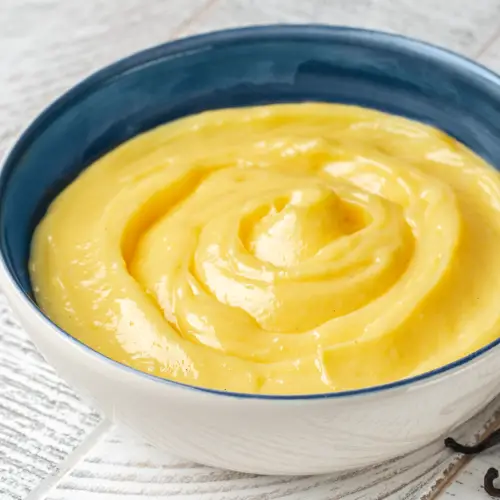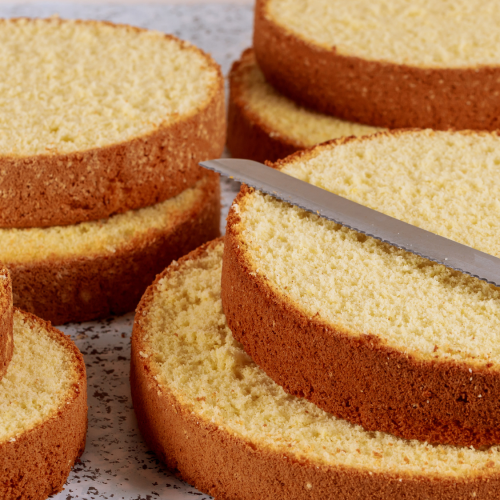table of contents
A very popular question is how to make sourdough starter at home. Making Sourdough at home is pretty simple because very few ingredients are needed: water, Flour, and Air! Let me explain how to make sourdough at home… easily!
It is often recommended to use a starter, an ingredient (such as fruit pulp, white yogurt, or honey) capable of triggering fermentation. Still, you risk introducing many bacteria that could make our yeast too sour.
On the contrary, we will see how to use only flour (but of good quality) to start our yeast. If flour is already available, all the substances (such as sugars, proteins, and mineral salts) must initiate a “healthy” fermentation.
Yes, the real starting point is to create a small community of yeasts and bacteria, which will become larger daily!
The time needed to bring the Sourdough starter to proper maturity is about 15 days. Still, it will depend on many factors:
- The flour used
- The temperature in your kitchen
- Even the microorganisms present in the air of your home
So don’t worry; if your sourdough starter doesn’t entirely respect the schedule, we’ll give it… Maybe it will be lazier or more vigorous than your friends’ one!
Before you start, consider the main fermentation methods: sourdough vs yeast, Levain and Biga.
HERE ‘S HOW TO MAKE SOURDOUGH STARTER AT HOME
Day 1
The essential step is to capture the yeast and bacteria in the air and “invite” them to interact with a world made for them, precisely the dough from which we will start. It contains everything these microorganisms need: food and water!
Knead then;
- 150 grams of Wholemeal or Semi-Wholemeal Flour
- 75 gr. of Plain Water (better if bottled)
- 1 gram of Salt
Once all the ingredients have been mixed, place the dough in a clean jar, cover it with gauze or paper towels held by a rubber band, and let it ferment for 24/36 hours at 25°C.
In this first phase, you will not observe any dough growth. Still, inside it will be formed the first population of yeasts and bacteria used to start the future fermentation.
This is what the first sourdough starter looks like

From Day 2 to Day 4
After 24/36 hours, you will already notice the first signs of fermentation: the volume will not have increased much (at most about 1/2 times the initial volume), but there will be many bubbles on the surface of the dough, and you will already notice a characteristic smell of yeast (a bit spicy yet)

Once ready, remove the surface crust and take the middle part of the yeast. Weigh out the amount you want to refresh (I recommend carrying at least 200gr of yeast daily) and then knead it with:
- Flour: Equal weight of yeast
- Water: 43% of the flour’s weight
For example, if you want to refresh 200gr of starter, you will have to knead it with:
- 200gr of flour
- 86gr of cold water
I recommend you continue to use Wholemeal flour in this second refreshment and use good quality Bread Flour (ensuring the protein content is around 14%) for all subsequent refreshments.
Knead everything, put the dough in a container (maybe a measuring jug to follow the yeast development better), cover it with paper, and let it rest for at least 48 hours at 25°C. At the end of this period, you will already notice a slight dough growth (about 1.5 times its initial volume).
From now on, you will notice that after each refresh, the sourdough starter grows more and more after 24 hours, doubling (and more) on the fourth day.
If your starter is not so “strong,” don’t panic… It may just need a little more time!
Days 5, 6, 7
As you did on the previous days, repeat the refreshment and keep the sourdough starter in the pot at about 25°C (77°F) until it triples in volume within 20-24 hours.
At this point, you are already halfway there: the flora of yeast and bacteria is almost formed. It will need to stabilize over the next few days until it finds its balance!
On Days 8, 9, 10…, and 15
Repeat the feeding process daily (in the same proportions described above) as soon as you see the yeast triple its initial volume. After each refresh, keep it at around 25°C (77°F).
You will notice that your yeast will triple its initial volume in less time during these days until it takes only 6/8 hours.
At this point, the Sourdough starter is finally ready, and you can store it in water and use it to prepare your recipes!
Not sure if sourdough is the right choice? Read our full starters comparison.
your QUESTIONS ABOUT SOURDOUGH STARTER
In this case, the Sourdough will take longer to double the volume. Let it ferment for as long as necessary, and then continue with the usual refreshments.
If the Sourdough does not rise, there are many possible causes. First, you can refresh it by decreasing the amount of flour compared to the yeast (800gr of flour for 1kg of yeast) and add 1gr of malt powder for each kg of flour.
It means that the Sourdough is not yet mature. Continue daily refreshments until the yeast grows to between 3.5 and 4 times its initial volume in 7/8 hours.
The Sourdough will be ready when it grows to between 3.5 and 4 times its initial volume in 7/8 hours.
Once ready, you can decide to keep the Sourdough at room temperature and refresh it every day, or keep it in the fridge and refresh it every 5/7 days. How to Store Sourdough
Wholemeal or semi-wholemeal flours are suitable to start the preparation of Sourdough and trigger the first fermentation. After that, I recommend using a high-quality Bread Flour with content of proteins greater than 14% (or W 360 if you live in Europe).
Of course, you can use both gluten-free flour and flour mixes to make Sourdough. For example, you can use rice flour and rice starch together!
No, it is essential to leave the Sourdough in an oxygenated environment to promote new yeast cells and their interactions with the air’s bacteria. Simply cover the bowl with a cloth or some paper
High summer temperature makes it more challenging to control yeast acidity because it favors its development.
On the other hand, cold winter temperatures can slow down fermentation.
The best solution is to create a fermentation environment of around 19 degrees (66°F) (+/- 2°C).
No, a bath is only required when refreshing the mature Sourdough.
There is always a part of the previous dough discarded (such as the crust). However, I suggest not to use these parts, especially during the first weeks of preparation, because they can contain bacteria not tolerated by our body. This is not the case for the refreshments made when the Sourdough is ready and mature.
Here the waste parts can be dried first in the air and then in an oven at 100°C (212°F) for about 40/60 minutes and finally pulverized in a mixer. The resulting powder can be added to the bread and pizza doughs (about 10gr/kg of flour) to enhance the acidic note.
Most likely, the Sourdough has become too acidic. In this case, you can rebalance it by refreshing it with a yeast: flour ratio of 1:1.2 (1kg yeast and 1.2kg flour).
Yes, the real clock in Sourdough’s preparation is the Sourdough itself. If this gets to the proper rise earlier than expected, go ahead and refresh it.
Yes. Yogurt, honey, or fermented fruit pulp are very common starters to begin sourdough preparation. I personally do not recommend yogurt and honey because they create unstable acidity. I would instead recommend using fermented fruit pulp or simple whole wheat/semi whole wheat flour.
In this case, throw away the Sourdough and sterilize all utensils used before starting the preparation all over again.

























48 comments about “Come fare il lievito madre in casa”
Gentile Fred sono ancora io,Alessandra ti avevo scritto qualche settimana fa perché il mio lievito era troppo acido, ho iniziato da capo con 100g Segale integrale+ 50 di acqua(minerale); dopo 24/28 h ho fatto il primo rinfresco ovvero ieri con Farina 00 panettone 100g +100g primo starter+acqua minerale 44g + 0.2g di estratto di Malto, oggi alle 6.30 sono 24h tonde. Si vede sulla superficie una leggera umidità e la superficie del l’impasto dentro il barattolo sarà cresciuta di 2 mm ma molto poco rispetto ad ieri alle 19. Ho aspettato solo 27h dopo aver creato lo starter e non c’erano aumenti di volume, ho sbagliato a fare il primo rinfresco lo stesso e a far passare solo dopo il 1º 48h circa (lo rinfresco quindi con i secondo domani alle 18/19)? Dovevo attender di più anche dopo lo starter e non solo 27/28h? Cosa ho sbagliato? Ho letto su pH 4.1 che il secondo rinfresco lo dovevo fare dopo 23h circa ma non c’è molta differenza rispetto a ieri, cosa devo fare? Grazie fred e ancora complimenti
Ciao Alessandra!
una volta fatto il primo rinfresco dello starter, ci vorranno almeno 48ore prima che ti veda un qualche sviluppo; quindi non se dopo 24-27ore non noti nessuno sviluppo è normale.
Aspetta 48 e vai poi avanti con i rinfreschi, usando la farina panettone. Non usare poi il malto nei rinfreschi, altrimenti rischi che il lievito acidifichi (ho scritto una guida sul Malto Diastasico che ti consiglio di leggere)
A presto!
Buonasera Fred e grazie ♥️ Forse ho inteso male ma su ph 4.1 c’è una tabella dove ci sono i primi 8 giorni di preparazione e nascita del lievito, ovviamente non ho usato l’estratto di Malto Bongiovanni nello starter acqua + segale ma ne ho usato lo 0.2%(a malapena 2grammi) sul primo rinfresco fatto ieri. Domani concluse le 48h faccio il secondo; come mai viene consigliato l’uso di 0.2% di estratto nei rinfreschi dal 2º ad almeno fino alle8º? Sul libro viene solo fatto riferimento all’apporto di zuccheri fermentabili e alla capacità dell’estratto di aiutare la produzione di enzimi che li apportano a loro volta; c’è una ulteriore spiegazione? Ovviamente se me lo dici tu non seguo la tabella! Grazie ancora e let me know please ♥️
Ciao Alessandra,
in linea teorica l’indicazione è giusta, perché il MALTO DIASTASICO apporta zuccheri ed enzimi capaci di scindere gli amidi della farina in zuccheri utilizzabili dai lieviti.
A mio avviso, tuttavia, l’uso del malto nella fase di rinfresco è rischiosa perché tende ad accelerare molto la fermentazione e, con l’aumentare della temperatura ambiente in primavera-estate, è molto facile ritrovarsi con un fermento acido.
Ovviamente se usi una cella di lievitazione con una temperatura impostata, allora non avrai questo problema e l’aggiunta di malto ti consentirà di accelerare il processo!
A presto!
Grazie di nuovo Fred,sto portando avanti diversi lieviti e le domande sono sempre di più: oggi ne ho iniziato un altro non con la segale ma con una tipo 1o 2 (non ricordo) integrale macinata a pietra. È sbagliato? Sarebbe stato meglio usare un’integrale macinata più grezzamente ma semplice?
~ Ho dei dubbi sulle tempistiche di starter e 1ºissimo rinfresco: devo aspettare sempre 36/48 h dopo lo starter e poi 24 a scalare in diminuizione dal 1º rinfresco in poi o ne bastano 24/36 dopo lo starter e 48h le faccio passare invece dopo aver fatto il 1º rinfresco ( e poi 24 in diminuzione nei successivi)?
~ il 1º rinfresco nel video lo fai con la 00 mentre nel paragrafo consigli di farlo (solo il primo subito dopo lo starter) per una seconda e ultima volta sempre con l’integrale; considerando che stavolta ho usato una integrale macinata a pietra cosa è più giusto? Come mi devo regolare?
Grazie mille ancora e scusami per le mille domande ,un abbraccio
Buongiorno Freud grazie per tutti i tuoi consigli; mio padre ha un forno ed io ogni tanto lo aiuto,ho iniziato a preparare il LM e sono all’8º giorno di rinfresco: noto che il lievito non è pronto ovviamente ma triplica e la consistenza è appiccicosa non solida appena tolgo la crosta, si attacca alle mani. Immagino sia l’acidità ma trattandosi di un forno la temperatura non è statica e babbo ha sempre la cella piena non posso usarla! Cosa devo fare? Non posso fare bagnetti se lo sto creando da zero;che mi consigli?
Un sentore di acido a naso si sente! Grazie e aspetto notizie!
Ciao Alessandra,
rinfrescalo con un rapporto di lievito:farina di 1:1,5 per qualche giorno, finché non tornerà ad avere una buona consistenza ed un odore “corretto”
A presto!
Ciao!
Ho iniziato il mio lievito 5 giorni fa, ma a mio parare c’è qualcosa che non quadra.. ti spiego, il primo giorno ho fatto il lievitino/starter dopo 48 ore ho fatto il primissimo rinfresco, passate altre 48 ore ho fatto il secondo rinf. Ma dal terzo rinf. ho notato che qualcosa non va, perché dopo solo 9 ore il mio lievito ha già raddoppiato il suo volume e ha un forte odore acetico.. per piacere aiutatemi voiiii.
Grazie Per la risposta
Ciao Stefano,
non ti preoccupare, è normale che il lievito sia molto instabile nelle prime settimane!
Questo può dipendere da moltissimi fattori come la temperatura, la farina e la flora batterica che ha raccolto!
Continua pure con i rinfreschi in modo regolare!
A presto!